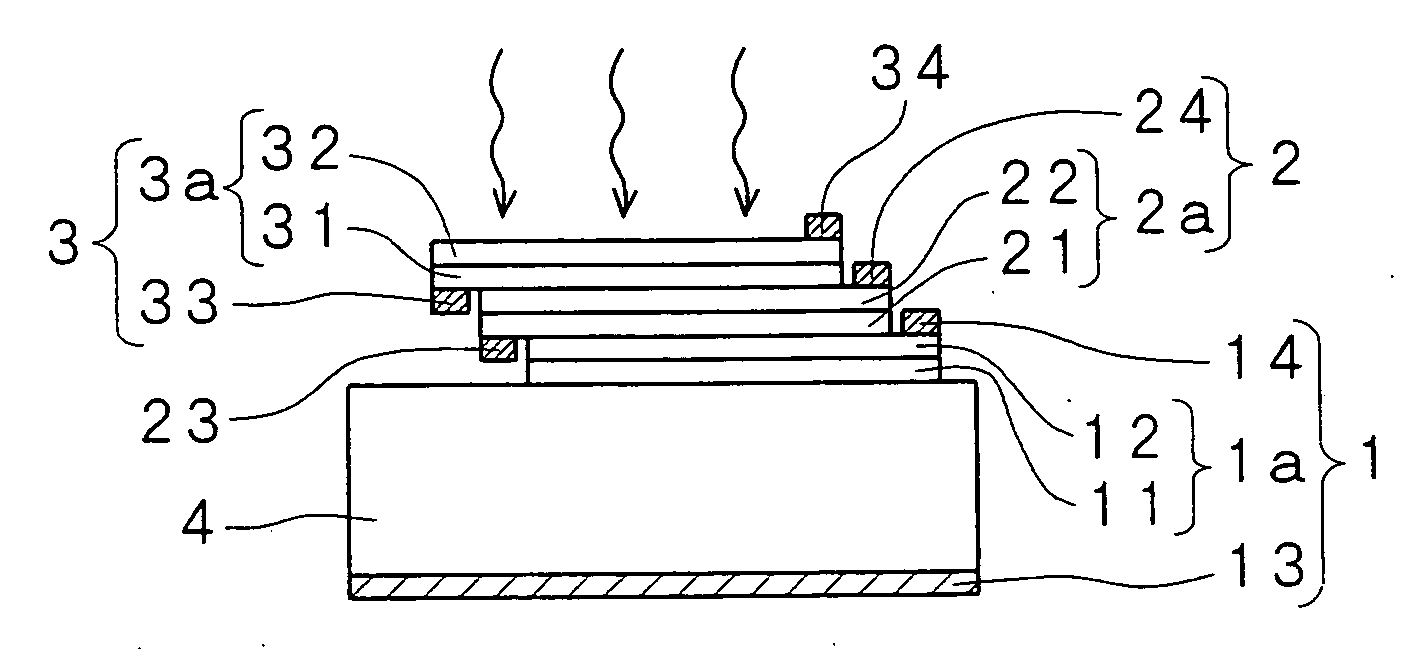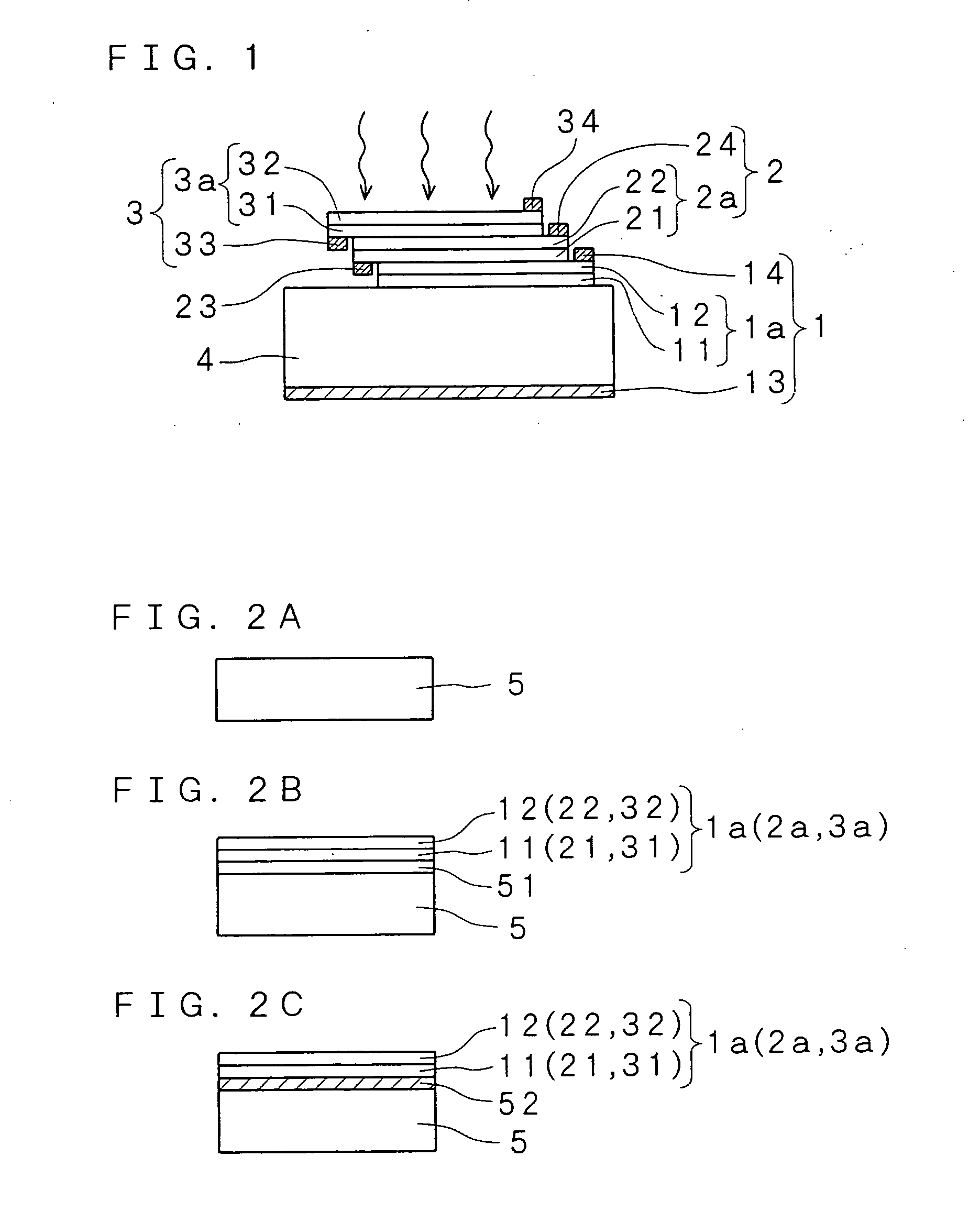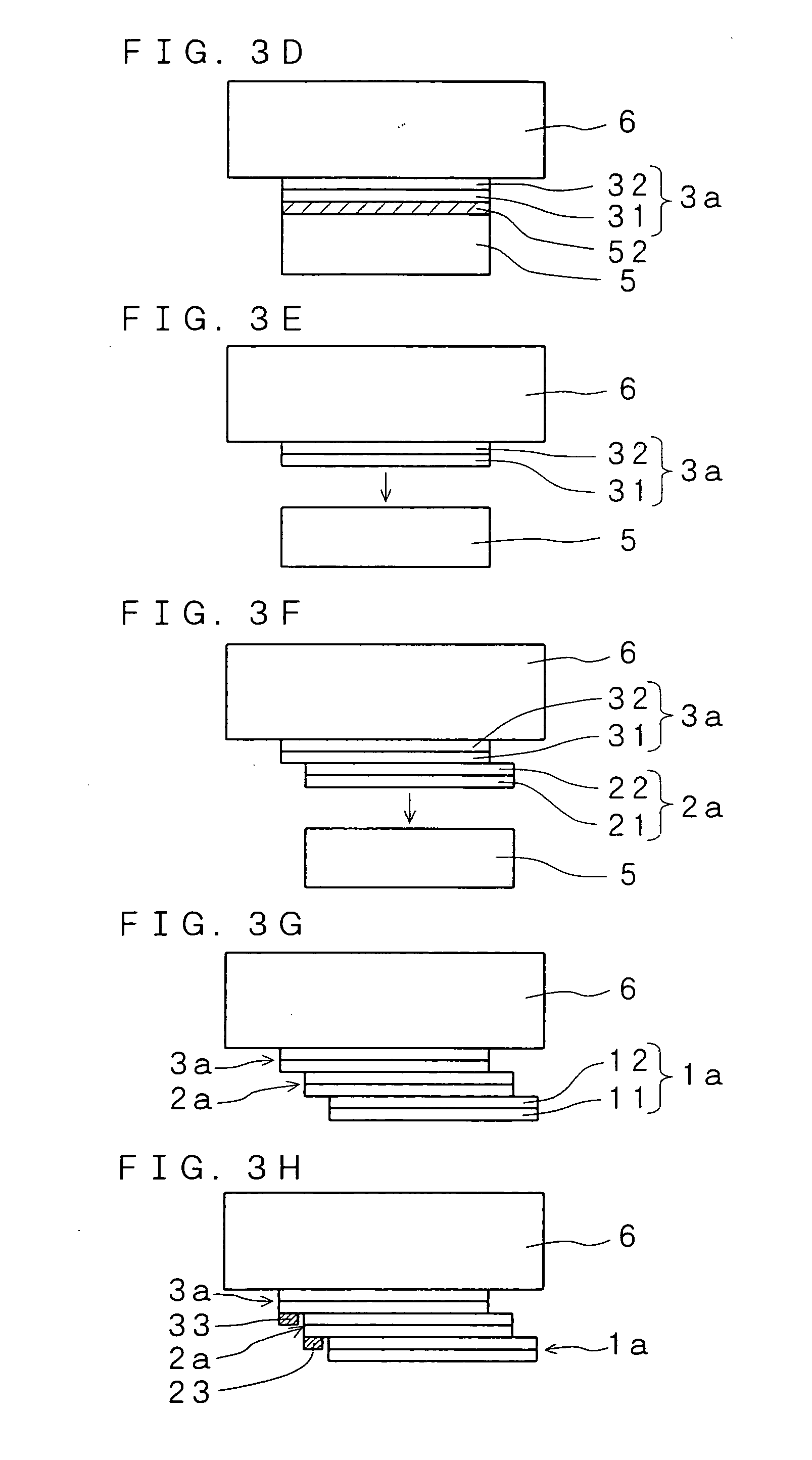Laminate Type Thin-Film Solar Cell And Method For Manufacturing The Same
a solar cell and laminate technology, applied in the manufacture of final products, basic electric elements, solid-state devices, etc., can solve the problems of insufficient high conversion efficiency of solar cells, inability to grow semiconductor layers of good crystal structure, and inability to obtain solar cells having a sufficiently high conversion efficiency. , to achieve the effect of easy production, low waste and high efficiency
- Summary
- Abstract
- Description
- Claims
- Application Information
AI Technical Summary
Benefits of technology
Problems solved by technology
Method used
Image
Examples
Embodiment Construction
[0032] An explanation will be given below of a laminate type thin-film solar cell and a method for manufacturing the same according to the present invention in reference to FIGS. 1 to 3. The laminate type thin-film solar cell according to the present invention includes a first photoelectric conversion unit 1 formed on the substrate 4 and a second photoelectric conversion unit 2 formed on the first photoelectric conversion unit 1. The first photoelectric conversion unit 1 includes a first semiconductor lamination portion 1a (11, 12) made of a semiconductor having a first band gap energy and a first pair of electrodes 13 and 14 which are formed on at least a part of each of both surfaces of the first semiconductor lamination portion 1a and connected electrically thereto. The second photoelectric conversion unit 2 includes a second semiconductor lamination portion 2a (21, 22) made of a semiconductor having a second band gap energy and a second pair of electrodes 23 and 24 which are for...
PUM
 Login to View More
Login to View More Abstract
Description
Claims
Application Information
 Login to View More
Login to View More - R&D
- Intellectual Property
- Life Sciences
- Materials
- Tech Scout
- Unparalleled Data Quality
- Higher Quality Content
- 60% Fewer Hallucinations
Browse by: Latest US Patents, China's latest patents, Technical Efficacy Thesaurus, Application Domain, Technology Topic, Popular Technical Reports.
© 2025 PatSnap. All rights reserved.Legal|Privacy policy|Modern Slavery Act Transparency Statement|Sitemap|About US| Contact US: help@patsnap.com



